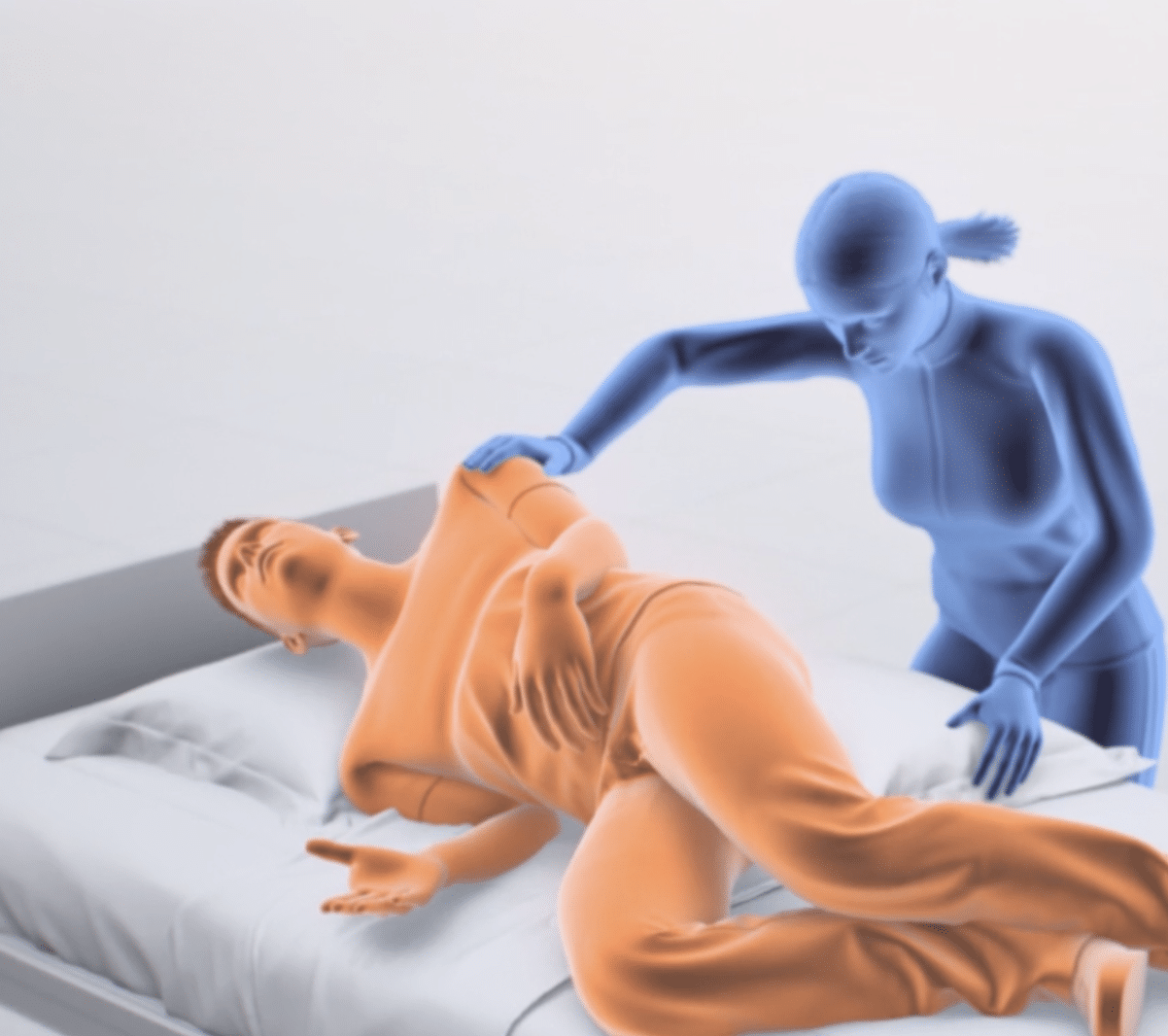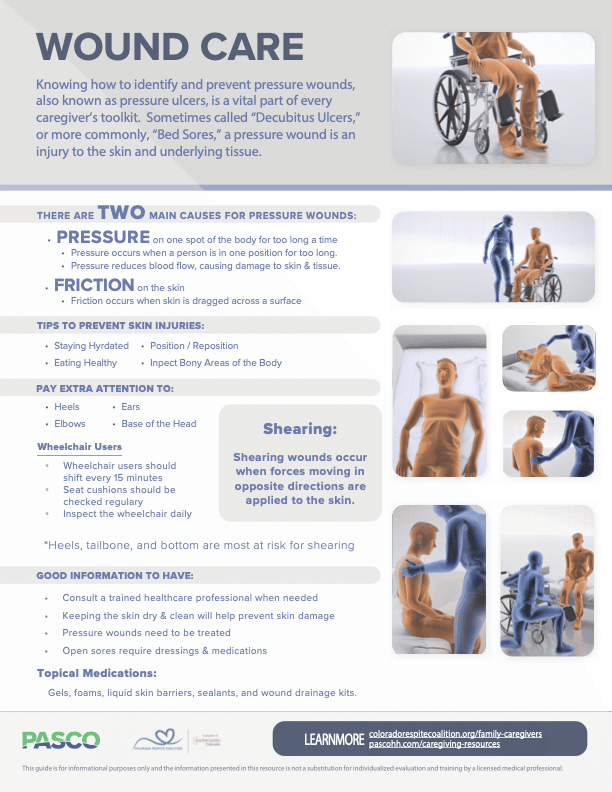Wound Care Overview
Knowing how to identify and prevent pressure wounds, also known as pressure ulcers, is a vital part of every caregiver’s toolkit. Sometimes called Decubitus Ulcers, or more commonly, bed sores, a pressure wound is an injury to the skin and underlying tissue.
There are two main causes for pressure wounds:

Tips to prevent skin injuries
Shearing
Heels, tailbone, and bottom are most at risk for shearing
Preventing pressure wounds in bed
-
Keep head elevation as low as possible while in bed
-
Move the individual in bed every two hours, or one hour if they are prone to pressure wounds

-
Use a drawsheet when possible to move the individual in bed
-
Use pillows and cushions to maximize comfort and minimize pressure
Wheelchair users
-
Wheelchair users should shift weight every 15 minutes
-
Seat cushions should be checked regularly
-
Inspect the wheelchair daily
Wound care tips:
-
Consult a trained healthcare professional when needed
-
Open sores require medication and dressings
-
Pressure wounds need to be treated immediately
-
Keeping the skin dry and clean will help prevent damage
